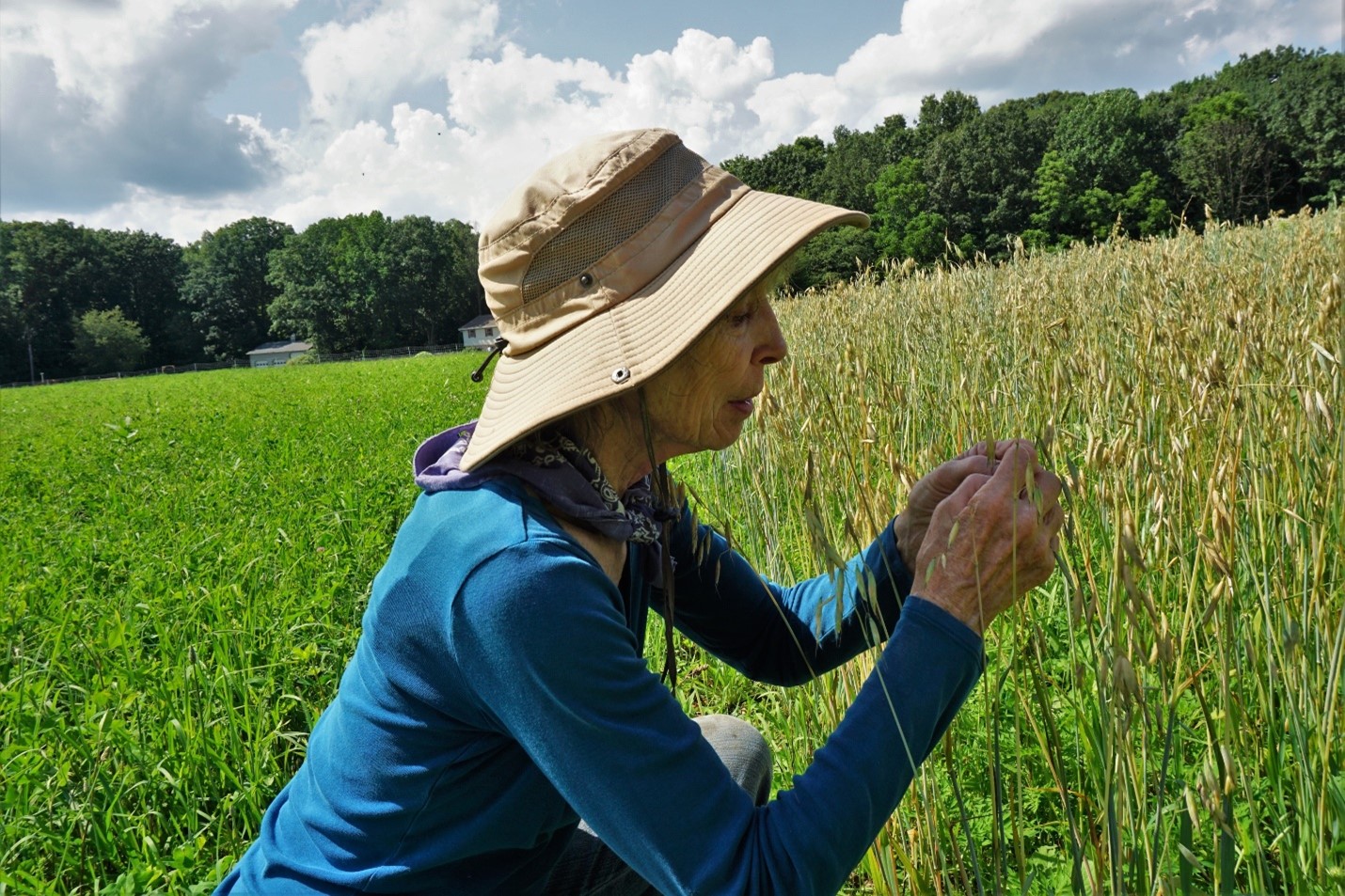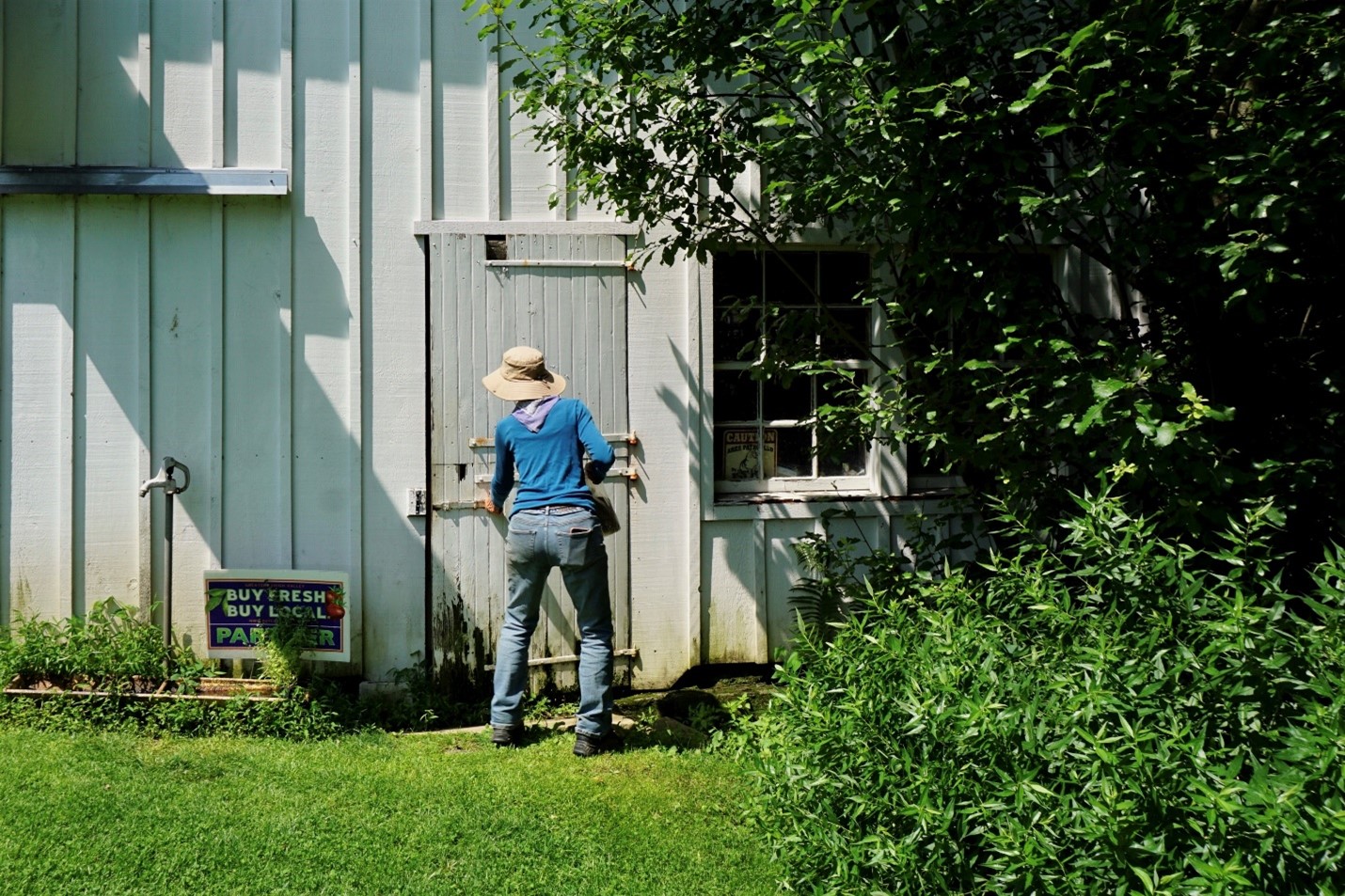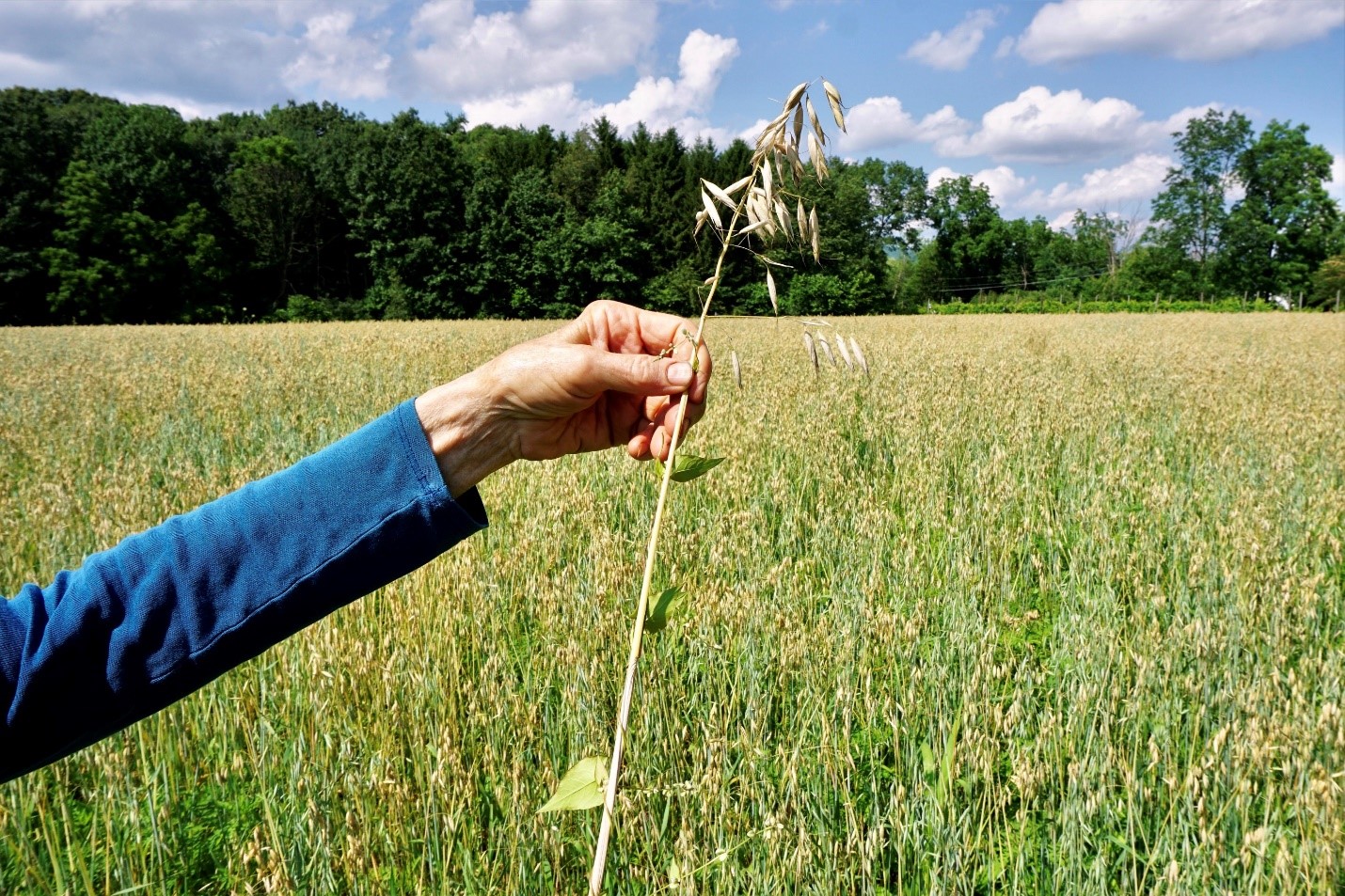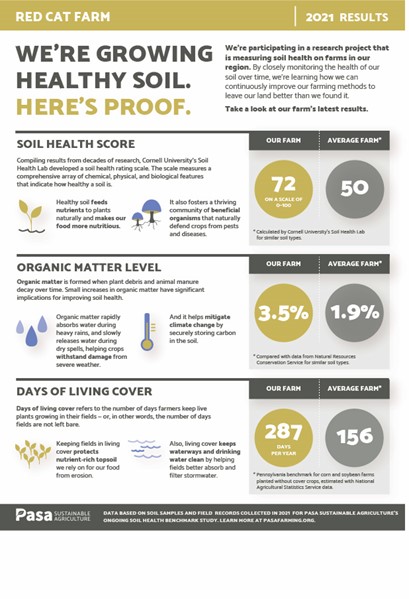Red Cat Farm
Farm at a Glance
COUNTY:
Lehigh County, PA
WATERSHED:
Susquehanna
CROPS:
Starter plants, rye, wheat, oats, purple barley, red fife wheat
FARM SIZE: 8 acres
SOIL HEALTH PRACTICES:
Cover crops, minimal tillage, nutrient management, crop rotation, organic fertilizers and soil conditioners

For Teena Bailey, farming for better soil health has opened the doors to offering unique, high-quality products that showcase the success of regenerative agriculture. Bailey is the owner and operator of Red Cat Farm in Lehigh County, PA. About a decade ago, Bailey was advised by an extension agent to incorporate grain cover crops into her vegetable operation. Cover crops, which include grains such as rye, wheat, and oats, protect and build organic matter and can lead to healthier soil and improved harvests when planted in rotation with vegetables. These crops are generally not harvested but when Bailey began working with grain cover crops, she saw an opportunity. What if, instead of tilling the red fife wheat that had been planted in her vegetable beds to keep the soil healthy, she harvested and sold it? Choosing to bring a new crop to market can be a risky and challenging move for farmers. Bailey was a vegetable farmer, and grains were uncharted territory for her. However, she took the chance and has spent the last decade growing, harvesting, and supplying her local community with delicious heritage grains.
Red Cat Farm is an impressive operation with around eight acres in production, most of which is leased land. Bailey runs the farm almost completely independently. She grows and sells wheat, oats, and rye, has a flock of free-range chickens for eggs, and sells organic starter plants to local gardeners each spring. With a high tunnel that features a compost hot bed, Bailey can grow thousands of starter plants without power and later uses the compost elsewhere on her farm. Solar panels line the roof of her high tunnel and power the fans inside it, as well as a CoolBot used for storage on the farm.
Bailey demonstrates thoughtful, purposeful, and resourceful farming on Red Cat Farm. Bailey processes and packages her grains in an old camping trailer converted into a commercial kitchen. The kitchen includes equipment for cleaning and storing harvested grains. A Sosnowski, which Bailey describes as a “very simple machine”, cleans, cools, and dries the grains, which then go into large silos for safe storage.
Bailey sells her chemical free, heritage grains directly to consumers. Avid home bakers particularly seek out Red Cat Farm products as tasty and high-quality alternatives to conventional options. Whole wheat pancake mix, rolled oats, and wheatberries are some of the Red Cat products sold at farmer’s markets, farm stands, and pop-up shops throughout the Lehigh Valley. And Bailey’s customers aren’t just buying her products for their stand-out taste and quality, but also because of Bailey’s farming practices. “I can tell people that we don’t spray. We use organic fertilizers and cover crops for nitrogen… Instead of using nitrogen by applying it, I use clovers and other cover crops to add nitrogen to the soil.”

Soil health is integral to the ways in which Teena Bailey works on her land, business, and practices. Building healthier soils for better crops is an ongoing journey. While she has found success with incorporating practices such as cover cropping, Bailey is still continuously experimenting, learning, and facing new challenges. Bailey uses no pesticides in her fields, so she must find innovative ways to approach weed and pest control. For instance, thistle is a common and persistent weed that spreads throughout Bailey’s grain fields. In one field, Bailey was able to smother much of the thistle by planting sorghum-sudangrass, a warm-season cover crop.
Yet, in another, the thistle won’t seem to budge. Bailey is hesitant to turn to tillage as a solution because she knows how it could impact her soil. She explains, “the less you’re on the field with equipment the better. In other words, just don’t disturb it, as much as you possibly can. Don’t plow it, don’t get on it, don’t compact it, just don’t turn it over. You want to keep the carbon in the soil, you don’t want to release it through tillage. I am trying to minimize cultivation and soil disturbance, yet, I have to fight those thistles somehow…that’s the balance”.

This summer, Bailey is excited to connect with Elizabeth Dyck, a consultant who will provide her with technical assistance aimed at her specific goals and needs. Dyck’s work with Red Cat Farm is funded through an American Farmland Trust Women for the Land Cohort supported by a Conservation Innovation Grant from Pennsylvania Natural Resources Conservation Service and a Northeast Sustainable Agriculture and Education program grant. Bailey and eight other women farmers in the Susquehanna watershed participated in this year-long cohort, which focused on advancing soil health as part of whole-farm systems. The cohort members attended virtual and in-person field days and learning circles, received financial and technical assistance, and exchanged knowledge, stories, and experiences. Bailey also participates in Pasa Sustainable Agriculture’s Soil Health Benchmark Study, which helps her better understand how her management practices impact her soil health and how her farm compares to others.

Soil health practices can improve crop yields and quality, contributing to farmers’ financial success, while also keeping farmland productive and regenerative in the long-term. Healthy soil is central to Teena Bailey’s operation, but she is also well aware of the importance of protecting the land beyond the soil. Lehigh County, a highly agricultural region in Pennsylvania, has a strong history of farmland preservation. Bailey, along with other farmers in the area, have fought to ensure farms in the Lehigh Valley are protected, working with organizations such as AFT and Pennsylvania Department of Agriculture’s Farmland Preservation Bureau to advocate for and establish farmland preservation policies. And at Red Cat Farm, caring for the land means going deeper — it means building up the soil so that the land remains productive, fertile, and regenerative for years to come.

